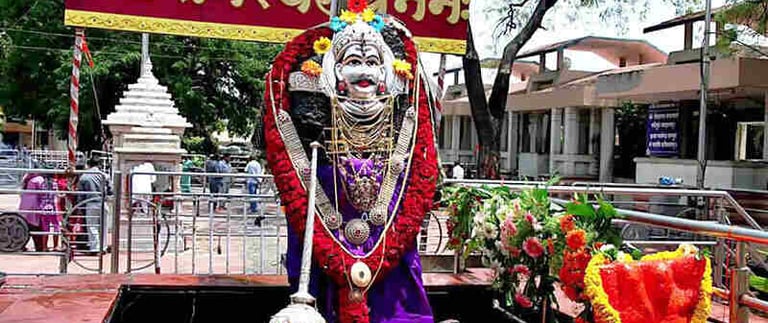Shani Shingnapur Temple – History, Timings & Travel Guide
Explore Shani Shingnapur Temple in Maharashtra – its unique traditions, history, darshan timings, and travel tips for devotees visiting Lord Shani’s shrine.
SHIRDI TRAVEL GUIDE
8/25/20252 min read
Shani Shingnapur Temple in Maharashtra is one of the most unique shrines in India. Dedicated to Lord Shani, the deity of justice, this temple is famous not just for its divine energy but also for its village where no houses have doors. Believers say it is Lord Shani’s protection that keeps them safe from theft and dishonesty. For devotees traveling to Shirdi, a trip to Shani Shingnapur is a spiritual experience worth adding to their itinerary.
History of Shani Shingnapur Temple
According to legend, about 300 years ago, a black stone emerged from a river near Shingnapur. When villagers touched it with a stick, blood began to flow from the stone. That night, Lord Shani appeared in a villager’s dream, declaring Himself as the deity within the stone and instructing that it be placed in the open air. Since then, the stone is worshipped as Lord Shani, without any roof or walls — symbolizing that the sky itself is His shelter.
Unique Traditions of the Temple
Shani Shingnapur stands apart from most temples due to its extraordinary customs:
No Doors in Houses: The villagers believe Lord Shani protects them, so homes, schools, and even shops have no doors. Locks are almost never used.
Open-Air Idol: The black stone (5.5 feet tall) representing Lord Shani is installed on a platform in the open, without any temple structure.
Self-Policing Faith: Devotees say anyone who attempts theft in the village faces divine punishment from Lord Shani.
Special Worship on Saturdays: Saturdays are considered most auspicious to offer prayers and oil to Lord Shani.
Temple Importance for Devotees
Lord Shani is believed to be the dispenser of justice, rewarding good deeds and punishing wrongdoing. Devotees visit Shani Shingnapur seeking relief from hardships, planetary afflictions, and misfortunes. Applying sesame oil to the idol is believed to reduce the malefic effects of Shani Dosha in astrology.
For those facing career, health, or financial struggles, the temple is considered a powerful place for divine intervention.
What to See at Shani Shingnapur
When you visit, here are the highlights not to miss:
1. The Main Idol
The swayambhu (self-manifested) black stone idol of Lord Shani is worshipped under the open sky, a rare sight in Hindu temples.
2. Oil Offering Ritual
Devotees pour mustard or sesame oil on the idol, seeking blessings and protection.
3. Devotee Prayers and Abhishekam
Special pujas are conducted on Saturdays and during Shani Amavasya, drawing thousands of pilgrims.
4. The Doorless Village
Walk around Shingnapur village and you will notice homes and shops without doors — a living testimony of unshakable faith.
Shani Shingnapur Temple Timings
Open daily: 24 hours
Best time to visit: Early morning or late evening
Special day: Saturday (most crowded but spiritually powerful)
Travel Guide – How to Reach
Shani Shingnapur is located about 70 km from Shirdi in Maharashtra.
By Road: Regular buses and taxis are available from Shirdi, Ahmednagar, and Nashik.
By Train: The nearest railway station is Ahmednagar (35 km away).
By Air: The nearest airport is Aurangabad (90 km away). Pune Airport (160 km) is another option.
Travel Tips for Devotees
Dress modestly and maintain silence while in the temple.
Saturdays and Shani Amavasya can get extremely crowded — plan accordingly.
Avoid carrying valuables as the temple area is busy with pilgrims.
Combine your visit with a trip to Shirdi Sai Baba Temple, as both are closely connected spiritually.
Conclusion
Shani Shingnapur Temple is more than just a religious site — it is a symbol of faith, honesty, and divine justice. Whether you believe in Lord Shani’s cosmic power or simply admire the village’s unique traditions, a visit here leaves every traveler deeply moved. For devotees traveling to Shirdi, Shani Shingnapur is a must-see destination that completes the spiritual journey.


